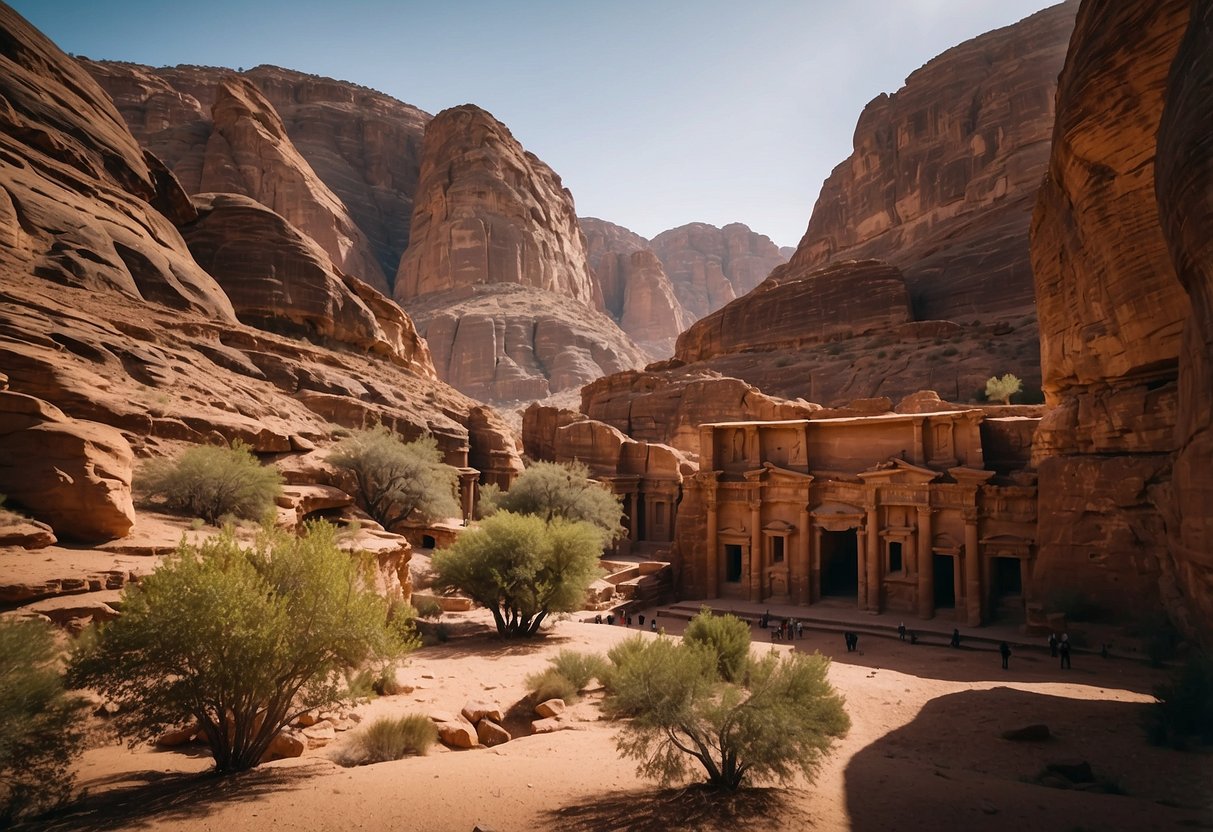
Stepping into Petra, Jordan’s ancient city, feels like entering a different world. Hidden within the rugged mountains, this UNESCO World Heritage Site offers a breathtaking glimpse into the ingenuity of the Nabateans, a civilization that thrived in the heart of the desert over 2,000 years ago. Travelers often find themselves in awe of the intricate tombs and temples carved directly into the rock faces.
The journey to Petra can be both physically demanding and utterly rewarding. Visitors pass through the narrow Siq, a winding gorge that suddenly opens up to the iconic view of Al-Khazneh, or the Treasury. Petra’s vast archaeological landscape extends well beyond this famous facade, encompassing an entire city that includes the Monastery, the Royal Tombs, and the Street of Facades, each brimming with historical significance.
Amidst the ancient ruins, today’s tourists can explore the remnants of a civilization that mastered water conservation and trade. The Nabateans once controlled vital trade routes, and their legacy lives on through Petra’s impressive architecture and engineering. The blend of natural beauty and human craftsmanship makes Petra not just a historic site but a marvel of human achievement.
Planning Your Trip
When planning a trip to Petra in Jordan, it’s important to consider the best time to visit, what essentials to pack, and the associated entrance fees. Proper preparation ensures a smooth and enjoyable experience at this ancient city.
Best Time to Visit
The ideal time to visit Petra is during the spring or fall months. Between March and May, and then from September to November, the weather is mild and comfortable. Daytime temperatures are usually between 15°C and 25°C, which is optimal for exploring.
Summer temperatures can soar above 40°C, making it extremely challenging to navigate the site. Winter months bring cooler temperatures and occasional rain, which might disrupt plans. Always check the weather forecast before planning the trip.
What to Bring
Packing wisely can greatly enhance your trip to Petra. Comfortable, sturdy walking shoes are a must due to the uneven terrain and extensive walking required. A hat and sunscreen are essential for protection from the sun.
Bring plenty of water to stay hydrated, as water sources within Petra are limited. A light jacket is also recommended, as temperatures can drop in the evening. Don’t forget a camera to capture the breathtaking sights along the way.
Understanding Petra Entrance Fees
Petra entrance fees vary depending on the length of the visit and whether you hold the Jordan Pass. For those without the Jordan Pass, a one-day ticket costs 50 JD, a two-day ticket is 55 JD, and a three-day ticket is 60 JD. The Jordan Pass can be an economical choice, as it includes entry to Petra and several other attractions in Jordan.
Local guides are available for hire at an additional cost and can provide enriching insights into Petra’s history. Always carry some cash as many vendors and services within Petra do not accept credit cards. Advanced planning ensures a seamless experience when exploring this magnificent ancient city.
Getting to Petra
Travelers can reach Petra from various points, including Amman, Aqaba, and Israel, each offering unique routes and options. Understanding these can make the journey smoother and more enjoyable.
Arriving from Amman
Amman, Jordan’s capital, lies approximately 240 kilometers north of Petra. The most popular way to get there is by car or Jett bus. The Jett bus offers a direct route, leaving daily from Abdali Station. This journey typically takes about 3.5 to 4 hours.
For those who prefer to drive, renting a car is an option. The drive via the Desert Highway or the King’s Highway provides scenic views and flexibility in travel times. Taxis are also available but can be more expensive. Private tours offer another comfortable and informative option.